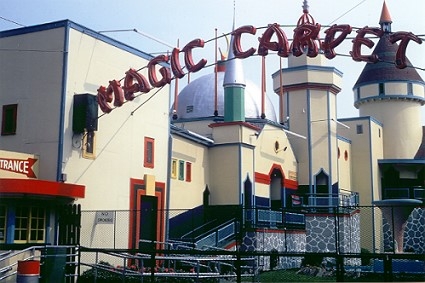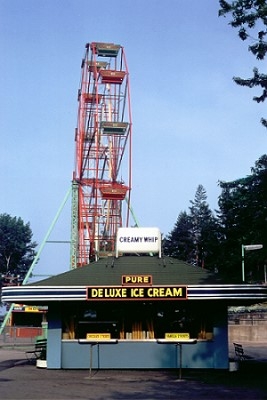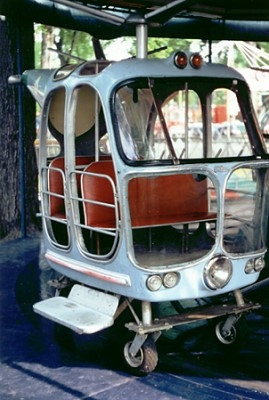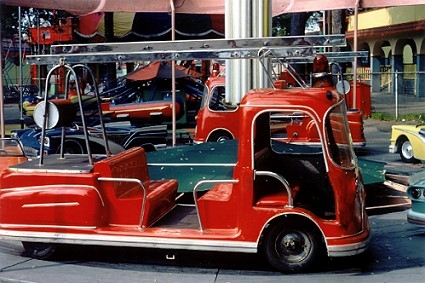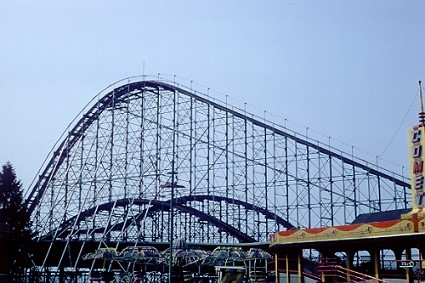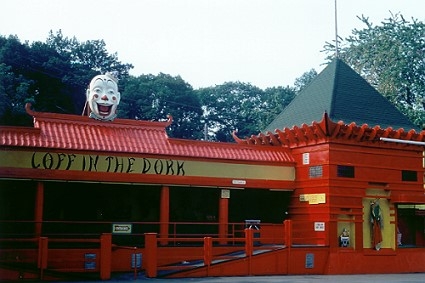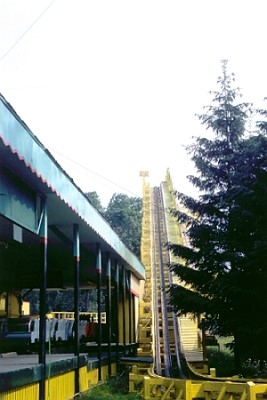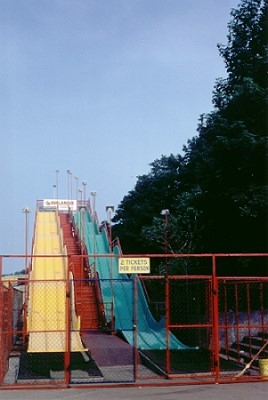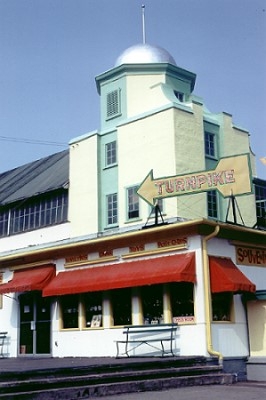Running Water Began to Flow in 1888
By George Foss
[Welland Tribune]
Except for a few senior citizens, the Welland Raceway represents a forgotten part of Welland’s history.
But members of the Welland Historical Society relived the past recently when Dr. Purdon discussed the raceway.
The Welland Raceway was completed between 1887-88 giving Welland electricity and water power.
All evidence of the old raceway has since disappeared. It originated from the Feeder Canal, where Prince Charles Drive intersects with Broadway Avenue. From this point it proceeded directly to the west side of the canal until it reached Lincoln Street.
Here, it turned westward, just south of the old fair grounds, at a parallel to Prince Charles Drive where it intersects Main Street West. It then turned east, striking a parallel to the Welland River, where it empties near Denistoun Street.
With a drop of 12 to 16 feet, the raceway was a stream about four feet deep and ten feet wide, moving with enough current to discourage swimming.
The Welland Electric Light Company was formed and a power plant was built just east of Prince Charles Drive. Power was obtained from two water powered turbines. Power lines were extended through parts of Welland and eight street lights were installed. Private homes could have electricity at a cost of $1 per month.
The arrival of electricity into the town of Welland provided the spark for the construction of a water works. The source of water was the canal, not the raceway on which it was built.
A.G. Kennedy of Owen Sound developed plans and supervised the construction of the water works. The Welland Water Works commenced operation in November 1888. With 5 ½ miles of pipe, 33 hydrants, and nearly every house being supplied by running water, the system was adequate until 1898.
As the population of the town increased, a new plant on Merritt Island gradually replaced the old facility. Sometime in 1920, both the old generating station and the old pumping station were demolished, ending an important part of Welland’s early history.
At no time during the operation of the water works on the raceway was the water purified. Water went directly from the canal to the homes. No wonder Welland was to face a problem of typhoid fever.
A chlorination system was added to the new water works on Merritt Island in 1912. There was still the problem with turbidity.
It was a long time, 37 years to be exact, before Welland was provided with an adequately treated water supply.
[Welland Telegraph, 27 January 1888]
General regret will be expressed in Ottawa at the announcement of the death at her old home, Hawksbury, on Thursday, of Mrs. Dewhurst, wife of Mr. E.R. Dewhurst, of the Department of Agriculture. The circumstances are particularly sad, as the marriage of the deceased was only celebrated two months ago. Mrs. Dewhurst succumbed to an attack of pneumonia after an illness of three weeks. She possessed in this city many friends who will sympathize with Mr. Dewhurst in his sad bereavement. The deceased was only twenty-six years of age. The funeral took place on Sunday last.-Ottawa Journal.
[Welland Tribune, 7 September 1888]
S.S. Hagar, Esq., who passed peacefully to rest at his home in Welland on Tuesday, was born in Thorold Township in 1811, of U.E. Loyalist parentage. In 1845, Mr. Hagar entered in the lumber trade and built a saw mill in Wainfleet, of which township he was a leading resident and until his removal to the town of Welland. Under the old regime he was for many years superintendent of public schools for Wainfleet, and was also clerk of the division court for that township. For upwards of thirty years past, he has been on the commission of the peace for the county of Welland. In 1839 he married Jane Eliza, daughter of the late Charles Fell, who survives him, as also do two daughters, Mrs. E.A.C. Pew of Welland and Mrs. C.C. Millard of East Saginaw, Michigan. In religion Mr. Hagar was a Methodist, and he was also for many years prominently identified with temperance work. Of an affable and courteous disposition, he was liked as well as respected and esteemed by all with whom he came in contact.
The funeral took place yesterday (Thursday) afternoon from the residence of Mr. E.A.C. Pew to the Fonthill cemetery. It was largely attended. A number of relatives from a distance including Mrs. Millard of East Saginaw, Michigan and Mr. J. B. Burns of Warren, Pennsylvania, daughter and grandson, respectively, of deceased were present. The floral offerings included a sickle and sheaf of wheat with the word “Father.” Rev. Geo. Clarke, formerly of Welland, now of Milton, conducted the service. He preached an impressive sermon from Job 14c, 14 v, “If a man die, shall he live again.” The pall bearers were Messrs. O.H. Round, T. Teskey, Jno. Kelly, L.D. Raymond, I.P. Willson and Chas Carter.
[Welland Tribune, 25 May 1888]
SUDDEN DEATH- Mr. Robert McNeal, one of our oldest residents, died suddenly, of heart disease it is supposed, on Sunday night last. He has been in unusually good health recently, and had his trunk packed to go to Burlington Beach Monday morning. He retired in unusually good spirits at about 11.30 p.m. Mr. Harry Burns and wife, who live in the same house, heard him cry out, “Oh!” and struggle in bed. On going to his room, Mr. Burns found that Mr. McNeal had expired. The body was taken to St. Catharines, where his wife is buried, the funeral taking place Tuesday. A number of Masons, of which Order Mr. McNeal was a member, went from here to take part in the ceremonies. Mr. McNeal was 73 years of age.-Dunnville Press.
Mr. McNeal was the father of Mr. C. McNeal and Mr. John McNeal, the well-known landlords of Port Colborne and Welland respectively.
[Welland Tribune, 15 June 1888]
We learn from the Los Angeles Tribune that Mr. Alva Price, formerly of Welland county, now a resident of Ontario, California, had a narrow escape from instant death on May 31st. It seems a young man named Broderick, with whom Price was slightly acquainted, got crazy drunk and went gunning on the street. Meeting Price he detained him in a drunken friendly way, but on Price leaving him said, “Price, I am going to shoot you,” and suiting the action to the word, blazed away. Fortunately Broderick was too drunk to fire straight, and although within a few feet, the ball passed harmlessly and lodged in a building near by, making a hole big enough to put a finger in. Broderick was grabbed by a passer by, disarmed and put in the lock up. No cause can be assigned for the shooting, except that he was crazy drunk.
[Citation appears to be: Bru Can Sim. August 1, 1888]
Wednesday morning during the storm eight men took refuge in the G.T.R. bridge shanty at the Air Line Junction near Welland, when without a moment’s warning a terrible crack was heard outside as of some explosion; instantly a flash of light flew past the window; and in another moment the sand and gravel began falling on the roof of the shanty.
The terrified men were breathless. When they revived a little they found that an electric thunder bolt had struck within twelve feet of the door, ploughed the ground about 3 feet long, 18 inches deep and 2 feet wide, and melting a dent in the steel rail about the size of a silver dollar. Those who saw it coming say it came from the southwest in the form of a chain and when it struck it burst and smoke and fire flew in all directions.
© HAROLD FOX
Crystal Beach Amusement Park ceased operations at the end of the summer season 1989, its rides dismantled or demolished. Today the area it once occupied is a gated community closed to the public.
(1888-1989)
 Subscribe..
Subscribe..
